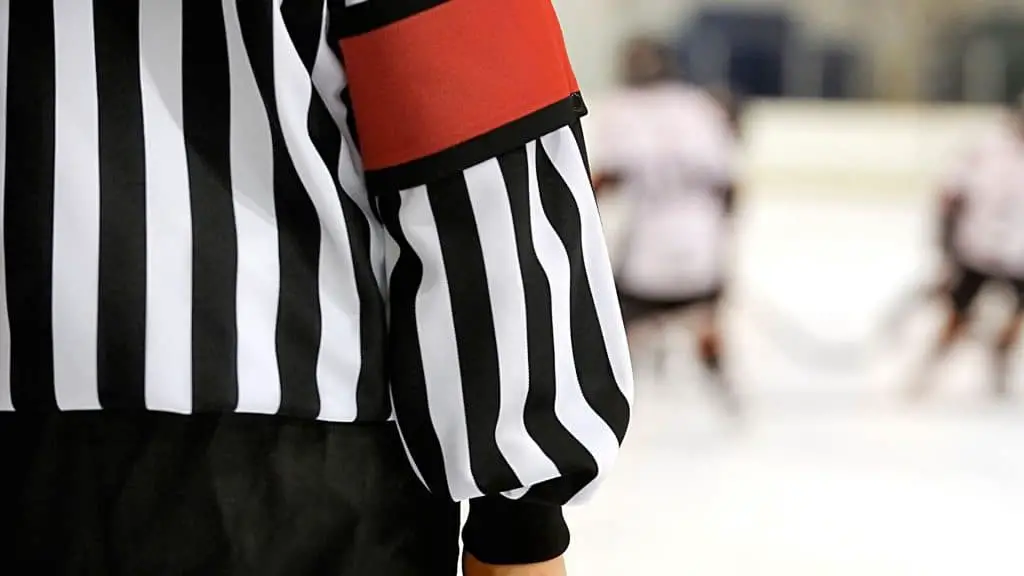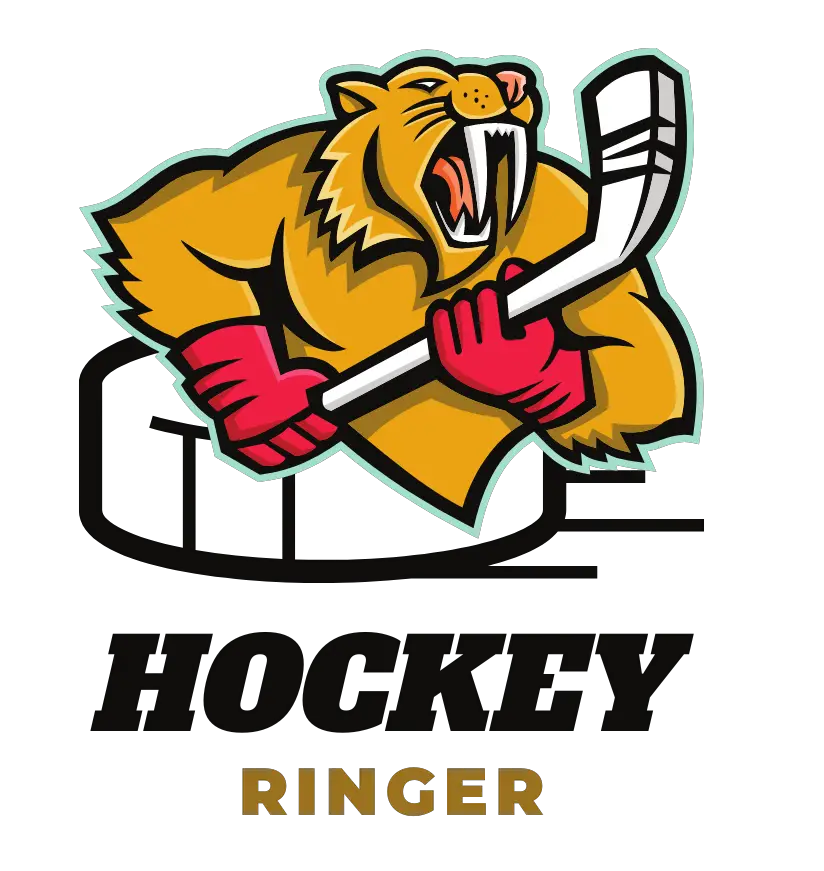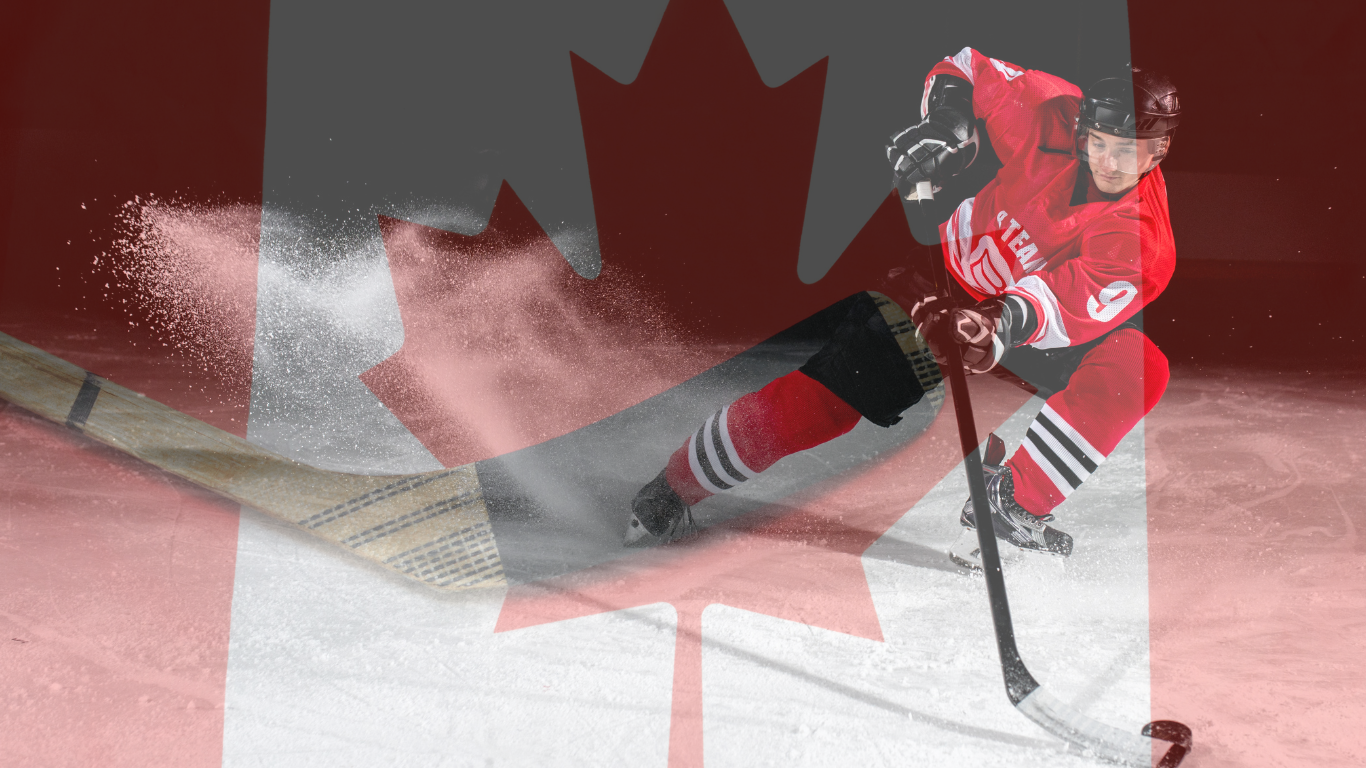In all the chaos of a hockey game, it is easy to lose track of the numerous officials whizzing around on the ice. They all wear black and white striped shirts, but some are differentiated by bright orange arm bands. You may wonder what the difference is between the two sets of officials, and why do hockey refs have orange bands, anyway?
There will be four different officials on the ice in the Hockey game. Two of these officials are referees, differentiated by their bright orange arm bands, while the others are known as linesmen, and they do not have orange bands.
In the rest of this article, I will detail the different types of on and off ice officials, how to tell the difference between them, and what their different responsibilities are within a hockey game. Keep reading to find out!
Why Do Some Hockey Refs Have Orange Arm Bands?

Actually, all hockey referees wear orange arm bands. This is intended to differentiate them from linesmen, the other officials on the ice at the same time. There will be four officials on the ice at any given time, and while they all wear black and white striped uniforms, only the referees will have orange arm bands on both arms.
What Is the Uniform for Hockey Referees?
All on ice officials wear the same uniform, except for the orange armband. They all wear black and white striped long-sleeved shirts, black pants, and a helmet. They will have their assigned number displayed on the back of their shirt, and a patch signifying the league which they officiate at the top left breast.
Usually, these officials will also wear a little padding, just in case they collide with a player or one another throughout the game.
What Is a Referee?
A hockey referee is in charge of supervising the game in general. They are responsible for calling both penalties and goals. Referees are the only ones who are able to assess penalties for rule violations.
A referee is also in charge of overseeing the opening face-off in every period, as well as the face-offs following scored goals. A referee is a more senior position than a linesman, which is a more entry-level role.
What Is a Linesman?
Hockey linesmen are mostly responsible for calls around the blue line, such as icing and offsides. This is actually why they are known as “linesman”! They will position themselves on the blue line to make sure that the offensive players do not enter the zone before the puck. If an offensive player enters the zone before the puck, this is known as “offsides.”
Linesmen also are responsible for breaking up scuffles and fights that may break out on the ice during a game.
In some leagues, linesmen are allowed to make other calls, like “too many men on the ice.” Other leagues, however, do not allow linesmen to make these calls themselves, and they must simply report the calls to the referees.
What Is an Assistant Referee?
Sometimes, and in some leagues, linesmen are given a different title of “assistant referee.” In these cases, they have more responsibility in hand to call penalties that the referees may have missed. The NCAA used to use this designation prior to 2006.
Why Do on Ice Officials Have Numbers?
All on ice officials wear numbers on the back of their shirts for identification purposes. Just like with players, a number makes it easy to identify who is where on the ice at a simple glance. Every referee and linesman has their own number.
Are There Always Four Officials on the Ice?
In the NHL, there are always four on ice officials. However, in some other leagues, such as the ECHL, youth hockey, or recreational adult hockey, different systems may be used.
The most common of these include the three-official system, which utilizes one referee and two linesmen, and the two-official system, which utilizes two officials who both act as referee and linesman. The least common of these systems is the 2-1 system, which utilizes two referees and one linesman.
In lower level leagues, sometimes there will only be one on ice official responsible for calling both penalties and line violations.
What Is an Off Ice Official?
Off ice officials, as you may guess from their name, are officials who do not step foot on the ice. These include officials such as the goal judge and video goal judge, the official scorer, the penalty timekeeper, the game timekeeper, and the statistician.
Do Referees Use Video Replay?
In the NHL, video replay has actually been utilized since 1991! There are many different scenarios which are eligible for video review, mostly controversial goal scoring scenarios. However, these scenarios are not actually reviewed by the referees.
Instead, when a goal is up for review, it is reviewed in Toronto in what is known as the “war room,” where a team of replay officials examines every goal that is scored.
Starting in 2015, in the NHL, coaches are also allowed challenges during a game. This means that coaches can decide to challenge a call and get the instant replay officials involved. However, if they lose the challenge, it costs a 2-minute penalty. There is no limit to how many times a coach can challenge, but every time they lose, a 2-minute penalty is added.
Do Hockey Referees Have to Be Certified?
At the professional level, yes, hockey referees must not only be certified, but they also must have a certain amount of experience. Once you become a certified hockey referee, you must pass through four levels of officiating before being allowed to officiate professional-level games.
There is also an exam that must be passed and a certain number of years of experience required for each level before a referee may move up to the next level.
NHL referees are level 4 officials, meaning that they have spent at least 3-4 years officiating, passed an exam, and been evaluated by a USA Hockey evaluator.



